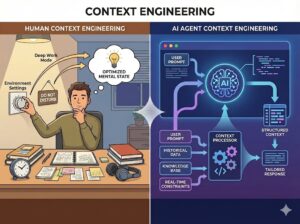Motivation Comes from Within
Summary Insight:
Stop trying to push people. You’re not short on motivation—you’re short on alignment. Genius isn’t created, it’s placed.
Key Takeaways:
- Motivation isn’t something you add—it’s something you uncover by aligning roles with natural strengths.
- Quit managing with carrots and sticks; shift the setting, not the person.
- When people operate from their genius zone, results explode—and management becomes effortless.
I received a call the other day from a high tech CEO looking for advice. His company is seven years old, brings in about $10M in revenue, and serves a very narrow niche in silicon wafer manufacturing. During the past year, his company pre-sold a new product concept to one of their largest customers. This new product is very innovative and promises to open up a brand new market and transform the company into a $100M-a-year business in three years. The product is due for its beta implementation in six months and you can imagine that the CEO has a lot riding on the outcome.
The reason for his call was that he was feeling a lot of anxiety and frustration. His biggest area of concern was that his employees didn’t seem to “get it.” They weren’t working hard enough, didn’t seem truly motivated, took long lunch breaks, went home early, and were making bone-headed mistakes – mistakes that the CEO (who is very technically savvy himself) would have to constantly step in and fix. “What should I do?” he asked me. “What will motivate them to perform faster, better, and smarter? Should I offer more stock options? Cash bonuses? Fire some people and set an example?” “No,” I told him, “None of those things are going to really solve your problem. If you want higher performance, the solution is to quit trying to motivate your employees and find out what already motivates them.”
The Myth of Motivation

If you doubt that people are naturally motivated, or perhaps you’re thinking of someone who doesn’t appear to be engaged, creative, or interested at all, I challenge you to look a little deeper. When you do, you’ll see that everyone is highly engaged, motivated, and proficient at something. Here’s one small example. I have a friend whose ten-year-old son is really struggling in school. He’s a sweet kid but at school he acts listless and disinterested and seems unable to keep up with his homework. Last year, the school principal called the parents in and explained that their son was going to be asked to leave the school unless some drastic changes took place. Based on the recommendation of the school counselors, the parents placed the child on medication, hired a tutor, put him into therapy, and created a series of incentives and punishments around his school work. So far, the boy has made some progress and he’s been able to remain in school. But my friend confesses that it’s a constant struggle to have him stay on top of his homework, adjust his medication, keep him motivated, and generally help this little boy thrive. It’s clear that managing the situation has a tremendous cost for the entire family.
I really feel for my friend and his family. It sounds stressful and exhausting on multiple levels. I imagine many organizational managers struggle in a similar vein trying to get some of their employees to really “get it” and “get on board with the program.” When I heard this story, I asked, “OK, so what is your son interested in? Where does he naturally seem to put his energy and attention?” My friend’s reply was telling: “Oh yeah, it’s video games. He’s super interested and passionate about playing his XBox. He studies and reads about the games constantly. He always wants to talk about them and play online with his friends. It’s driving me nuts. We have to limit his playing time and it’s a constant fight between us.”
I tried to point out the contradiction: “So on the one hand, your son is listless and unmotivated when it comes to his school work. On the other, he’s passionate and self-directed in his pursuit of mastering video games. It doesn’t seem that your son lacks motivation. On the contrary, he’s highly motivated, studious, proficient, and shows an extreme amount of skill development. If his school work was designed like a video game, he could be getting straight As. Your son isn’t suffering from a lack of motivation. He’s suffering from a current school setting that doesn’t align with his skills, motivation, and interests. If you were able to change the setting, such as exposing him to a different school or different curriculum, you’d realize that your son has plenty of motivation, determination, and drive to succeed.”
In this scenario, the parents, the counselors, and the school are missing out on the critical difference between motivation and setting. The boy doesn’t need drugs and discipline to be motivated. He’s already extremely motivated, just not around the things his parents and teachers want him to focus on. The same thing is true for your employees. Each person in your company is interested, self-directed, and self-motivated by something. The real question is this: Are they naturally talented, motivated and interested in the things you want them to be? It’s a subtle but profound difference.
Everybody Get in Your Genius Zone!

If, however, there is a complete mismatch between an individual’s genius zone and the work at hand, rather than fixing the problem with carrots or sticks, the best course is to find a better fit as soon as possible. In other words, if the demands of the job are diametrically opposite to what the individual is energized by, and if there are no other suitable roles available, then it is best to help this person find another job or role, either within or outside the organization. You’ll be shocked at what happens when you align someone’s role into a setting that supports their respective genius zone. In fact, you may no longer even recognize them.

What caused Ulysses S. Grant to transform from an impoverished failure, into the winning general of the Civil War, and ultimately into the President of the United States? You guessed it. The Civil War. Once the Civil War broke out it radically changed the setting or surrounding conditions. With a change in setting, Grant was then able to apply his innate motivation, skills, and talents — and quickly rose up the ranks. But notice that without the corresponding shift in setting, one would never have known General Grant’s real capabilities. Notice too that no amount of incentives, bonus plans, job training programs, coaching, or motivational tactics would have made a meaningful difference in the life of General Grant. Instead, he likely would have remained a surly drunk frustrated at his life conditions and lack of opportunities rather than a hero and a president. So yes, you can attempt to change or influence behavior by offering incentives, job training programs, coaching, or motivational tactics. But the truth is, just like General Grant, your employees will either thrive or fail due to the setting in which they work and the opportunities it presents. So stop thinking about how you can motivate your employees! It’s like pushing water uphill. You’ll expend a lot of energy with little ROI. Instead, find out how they are already motivated and then align their strengths with the work that needs to be performed – or, find employees who are a better fit.
If this seems airy-fairy or out of the question in your current work setting, then I’d challenge you to look deeper still. Even if you run a toxic industrial factory farm surrounded by blood, suffering, and unhealthy employees or a sweatshop run on child labor at $.10 cents an hour (I’m going for the most dismal settings I can imagine), you still have a choice to make. You can take the lowest common denominator and try to control, cajole, monitor, and “motivate” your staff. (If this is your current approach, how’s it really working for you anyway?) Or you can align people into jobs that fit their natural strengths and interests. If you do that, then your job of “managing” shifts from babysitting, firefighting, and cat herding to identifying and aligning strengths, communicating clear expectations, and providing constructive feedback. It may not feel easy, in the short term, to align people’s roles with their respective genius zones, but if you want self-motivated, creative, and high-performing people for the long run – and actually enjoy managing them – it’s the only choice you can make.
From a manager’s perspective, then, the real question is not how to motivate or incentivize employees to perform. The real question is, “where is the natural affinity and alignment between this person’s style, capabilities, and interests and the work that needs to be done?” The reason for this question should make sense intuitively. When there’s alignment between an individual’s natural motivations, skills, and interests and the current work setting, that person will enjoy and thrive in their role. When there isn’t, they’ll struggle and underperform or even fail.
Don’t make the mistake of thinking otherwise. You can’t change the fundamental nature of your employees any more than a parent can change the fundamental nature of their children. Guide it? Yes. Influence it? Certainly. Change it? Not a chance.
What About Compensation?

If you still don’t believe that compensation doesn’t dictate performance, just take a look at organizational cultures in your local church, school, softball team, or volunteer organization. What you’ll find is very hard-working, dedicated people who, even in the face of obstacles, are committed to their cause. The tragic thing is that most companies that are failing to reach their full potential actually do the opposite of what they should. They put their efforts into motivational tactics, hiring analysis, compensation plans, performance reviews, and that kind of thing but skip out on the most critical aspect of getting people to perform at a high level: matching them to their strengths. It’s like putting the cart before the horse. Sure, you can do it, but it’s not going to cause the cart to go anywhere.
Summary
When it comes to motivating people – don’t. Instead, put them in situations where their innate genius zone comes to life and watch them thrive. If you’re consumed by a focus on compensation structures and stock vesting schedules, you’re on the wrong track entirely. Instead, focus on aligning the work that needs to be performed with people’s natural strengths and interests. The result will be improved creativity, faster execution, and an innate drive to perform at a high level. If you can accomplish this, your job as a manager will become so much easier – not to mention a lot more fun and satisfying.
Back to Tutorials.
1. Some informative books on the subject of incentives causing more harm than good include Alfie Kohn’s Punished by Rewards: The Trouble with Gold Stars, Incentive Plans, A’s, Praise, and Other Bribes and a Whole New Mind by Daniel Pink.
2. The Lucifer Principle by Howard Bloom.




